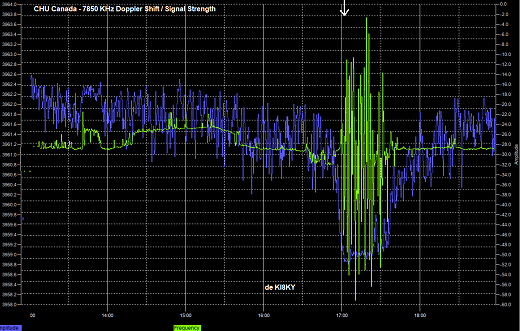Tuesday, Jun. 20, 2023
GEOMAGNETIC UNREST PREDICTED: Earth's magnetic field could become unsettled on June 21st when multiple streams of solar wind flowing from holes in the sun's atmosphere reach our planet. In addition, a CME is expected to deliver a glancing blow on June 22nd. Added together, these disturbances could cause a minor G1-class geomagnetic storm with solstice auroras at high latitudes. Aurora alerts: SMS Text POSSIBLE MID-LATITUDE NOCTILUCENT CLOUDS: Since late May, the NOAA-21 satellite has been monitorig a buildup of noctilucent clouds (NLCs) around the North Pole. On June 17th, the clouds may have spilled all the way down to mid-latitudes: "[Our latest map] shows lines of faint clouds extending down to 40 N," says Matt DeLand of Science Systems and Applications, Inc, who processed the data. "I'm not sure I believe these are all real clouds, because they show up in only one of three slits [in the satellite's OMPS Limb Profiler instrument]." Daily maps later this week may provide confirmation. NLCs are clouds of frosted meteor smoke. They form every year in summer when wisps of water vapor rise up to the edge of space and crystalize on the surfaces of disintegrated meteoroids. Often, the clouds are most widespread during nights around the summer solstice, with sightings in recent years as far south as Spain and southern California. With this year's northern summer solstice only 2 days away, the timing is right for mid-latitude NLCs. NOAA-21's detections may indeed be real. Stay tuned for updates in the days ahead and, meanwhile, be alert for noctilucent clouds. |









